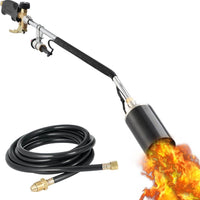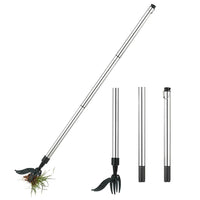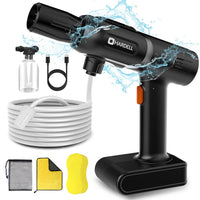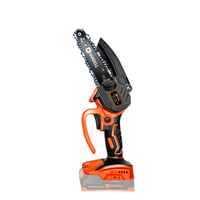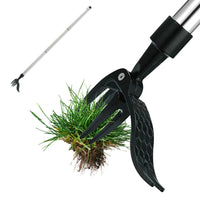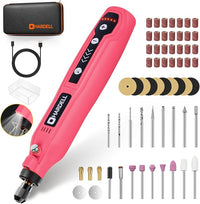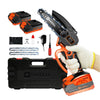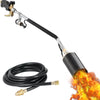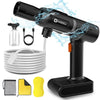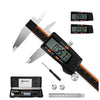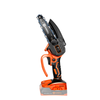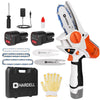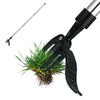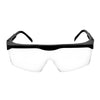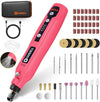Reviving The Charm: How To Use A Hardell Rotary Tool To Restore Your Old Window Frame

Reviving the charm of an old window frame can be a fun and rewarding experience. With the right tools, you can bring your tired-looking windows back to life in no time.
One of the most useful tools for this job is a Hardell Rotary Tool – a powerful tool that allows you to sand, cut, and engrave with precision.
In this article, we’ll show you how to use one of these versatile tools to restore your old window frames so they look as good as new!
Materials Needed
To complete this project, you will need the following materials:
- An old window frame
- 2-component filler
- Degrease
- Piece of dry cloth
- Paint suitable for outdoor use
- HDRT2220 4V Mini Cordless Rotary Tool
- sanding band and sanding paper(details with sanding paper)
Steps To Restore An Old Window Frame Using A Hardell Rotary Tool
Step-by-step instructions on how to use the rotary tool for each task, including:
Inspect the Wood for Rot
Before beginning any restoration work, it is important to check the window frame for signs of rot or damage. Rot can easily spread throughout the wood, so it should be dealt with as soon as possible.
Visually inspect all areas of the frame and look out for darkening of the wood, soft or spongy areas, and any other signs of damage. If you find any rot, it is important to repair the damage before moving on.
Removing Old Paint and Varnish
Once you have checked for rot, the next step is to remove any existing paint or varnish from the window frame. This can be done with a Hardell Rotary Tool using either a sanding band or a sanding paper attachment.
For best results, start with coarse-grit sandpaper and then gradually move to finer grits as you work. Take your time with this step as it is important for the paint to adhere properly to the frame.
Thoroughly Remove Damaged Wood
If any sections of wood were damaged due to rot, you will need to remove them with the Hardell Rotary Tool. Use a sanding band attachment and carefully remove any spongy or soft areas until you are left with a solid base for the paint to adhere to.
Smoothing the Surface
Repairing Any Damaged Areas with Wood Filler
Once you have thoroughly removed any damaged wood from the window frame, it is time to fill in any gaps or cracks with a 2-component wood filler. Begin by cleaning the area with a degreaser to remove any dirt or grime that could interfere with adhesion.
Then, apply the wood filler following the instructions on the packaging. Be sure to let it fully dry before adding any paint or varnish.
Sanding and Smoothing the Wood Surface
Once you have repaired any damaged areas with wood filler, it is time to sand and smooth the wood surface.
Using your Hardell Rotary Tool, attach a fine-grit sandpaper attachment and begin carefully sanding across the wood’s grain. Make sure to use even pressure to ensure a smooth finish and no deep scratches.
Painting the Window Frame
Once you have finished sanding, it is time to paint your window frame! Begin by cleaning the surface with a dry piece of cloth to remove any dust or debris that could interfere with the paint.
Then, apply a coat of outdoor-grade paint with a brush or roller. Make sure to use even strokes and let each coat fully dry before adding another layer.
Final sanding and polishing for a smooth finish.
Restoring an old window frame can be a rewarding experience and the Hardell Rotary Tool is one of the most powerful tools you need to get the job done.
From inspecting for rot, removing paint and varnish, sanding down any damaged wood with fine-grit sandpaper or bands, filling in gaps with two-component filler, painting with outdoor grade paint, and finally giving it a final polish – these steps will help you create beautifully restored windows that look as good as new!
With this guide in hand, you should have all the information needed to start your DIY restoration project today.
Wipe Down the Frame
When the painting of your window frame is finished, it is important to give it a final wipe-down to ensure all dust particles are removed from the surface. This will help protect the paint as well as give it a smooth, polished finish. Using a dry microfiber cloth, gently wipe away any remaining dust and debris that may have been left behind during sanding or painting.
If there are any stubborn particles stuck to the frame, use a mild cleanser such as an all-purpose cleaner or rubbing alcohol and scrub until they come off. Make sure to rinse off the surface after wiping it down with the cleanser to remove any residue.
Once you have finished wiping down the frame, you may also want to apply a coat of sealant or varnish for additional protection against weather damage and fading.
Taping Around the Frame’s Edges
Once you have finished wiping down the frame, it is important to tape around the edges of the frame to protect them from any potential paint or varnish splatters. Begin by using quality painter's tape and adhere it to the window frame, making sure there are no gaps between the strips.
Carefully cut away any excess tape that may be in the way of your painting process. This will ensure a clean finish and help keep your window frames looking their best for years to come. If you are going to use a varnish instead of paint, make sure that the varnish is compatible with the painter's tape you have chosen as some tapes may not stick properly.
Painting the Sanded Window Frame
Once you have finished sanding the wood surface, it is time to paint your window frame! Before you begin painting, make sure to clean the surface with a dry cloth to remove any dust or debris that could interfere with adhesion. Once the surface is free of debris and any other obstacles, you can begin painting.
Using outdoor-grade paint, start by applying a thin layer with either a brush or roller. It is important not to overload the area as this can lead to pooling and runs in the finished product. After each coat has fully dried, apply additional layers until you have achieved your desired coverage level.
When painting around edges and corners, use a small brush for accuracy and precision when applying paint. Make sure to fill in all gaps and crevices so that no part of the window frame goes unpainted – this will ensure your window frame looks its best for years to come!
Finally, once you are satisfied with your work, give the entire window frame one final wipe-down with a microfiber cloth before removing any painter’s tape from around its edges. This will help protect your paint from scratches or other damage while ensuring a smooth finish on your newly restored window frame!
Maintenance And Safety Tips
Once you have finished restoring your window frame, it is important to make sure that you take proper care of it to keep it looking its best. Here are some maintenance tips and safety precautions that you should follow when using a Hardell Rotary Tool:
- Always wear protective gear such as goggles and gloves when using a power tool like the Hardell Rotary Tool.
- Make sure to inspect the tool before using it to ensure that all components such as blades, bits, cutters, etc. are securely in place and functioning properly.
- When sanding, do not apply too much pressure or you may damage the wood surface or leave deep scratches.
- Use painter’s tape to cover up any areas that you do not want to be coated when varnishing or painting the window frame.
- Keep the Hardell Rotary Tool away from children at all times.
- Store the tool in a cool, dry place after each use to protect it from moisture and dust buildup.
- Regularly inspect the tool for any signs of wear or damage and replace any damaged components as soon as possible.
Follow these steps and you’ll be able to keep your window frame looking beautiful for many years to come.
Conclusion
Restoring old window frames with a Hardell Rotary Tool is an easy and cost-effective way to bring your home back to life. With the right materials, some patience, and a bit of elbow grease you can get professional results that will last for years.
Not only does this project give new life to your windows, but it also provides many safety benefits as well. Be sure to take all necessary precautions when using any power tool such as the Hardell Rotary Tool to avoid any potential accidents or injuries.
We hope these steps have encouraged you to try restoring an old window frame yourself—it’s worth it!

